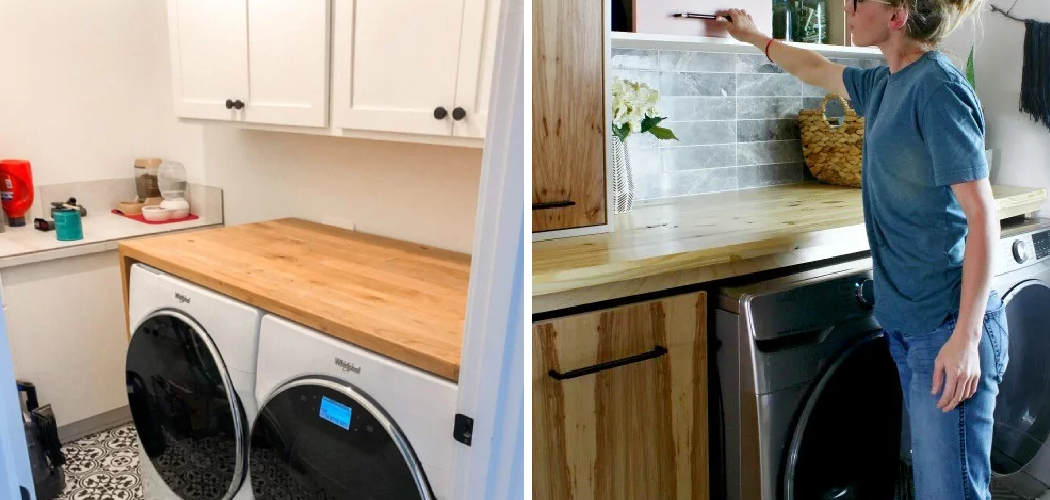The laundry room is an area of the home that gets a lot of use, so it’s important to make sure that surfaces are protected against water and other liquids. Butcher block is a popular material for laundry rooms because it looks great, but if it isn’t properly sealed, it can absorb liquid and become stained or warped. Sealing butcher blocks in the laundry room is essential to keep it looking good and prevent damage.
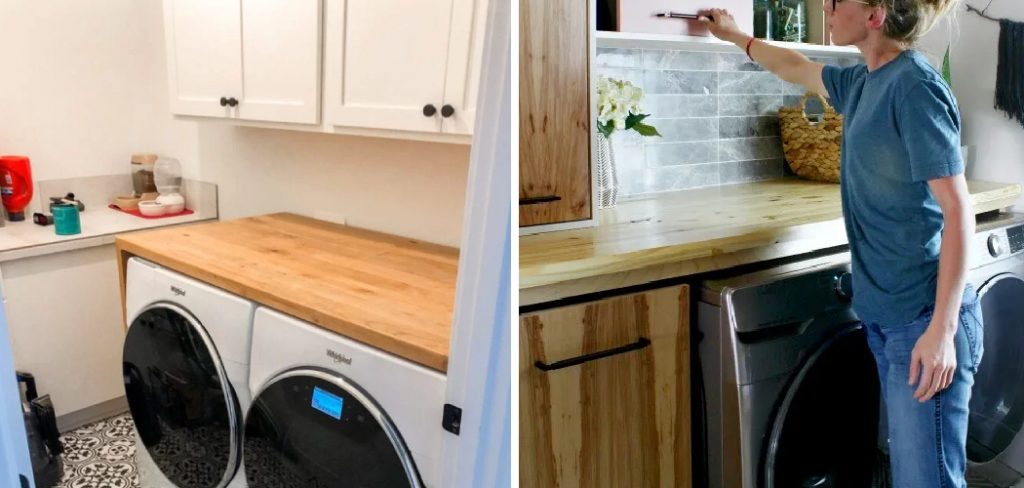
Sealing butcher blocks for laundry rooms has a number of advantages. First, it helps to keep the surfaces free from dirt and bacteria that can accumulate over time. The butcher block is porous, so sealing helps protect it from damage due to moisture or liquid spills. The seal also provides a protective coating to help prevent staining or discoloration of the surface. You can find step-by-step instructions on how to seal butcher block for laundry room in this blog article.
Step by Step Processes for How to Seal Butcher Block for Laundry Room
Step 1: Inspect the Butcher Block
Carefully inspect the butcher block for any cracks or chips. If there are any, use a wood filler to fill them in. Sand down the area when finished to ensure that it’s smooth and even with the rest of the surface. Clean your butcher block with warm soapy water. Rinse and dry with a soft cloth.
Step 2: Apply Mineral Oil
Using a clean lint-free cloth, apply a generous amount of mineral oil to the butcher block. Start at one end and work your way across the entire surface. Allow it to absorb into the wood for at least 15 minutes before wiping off any excess with another lint-free cloth.
Step 3: Wait 24 Hours
Wait at least 24 hours before continuing to the next step. This gives your butcher block time to absorb the mineral oil and ensure that it’s fully saturated. Using 220 grit sandpaper, go over the entire butcher block surface. This will help to remove any rough spots and create a smooth surface for the sealer to adhere to.
Step 4: Vacuum Debris
All of the debris that was created from sanding should be vacuumed up before continuing. This will ensure your sealer adheres properly and doesn’t become clogged. Apply the sealer to the butcher block using a clean, lint-free cloth. Start at one end and work your way across the entire surface. Allow it to dry for at least 24 hours before continuing to the next step.
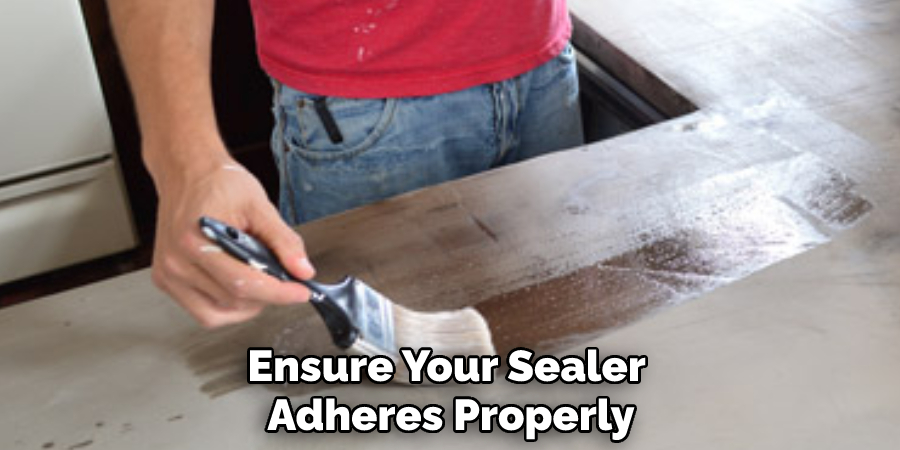
Step 5: Sand Gently
Lightly sand the surface of the butcher block with 220-grit sandpaper. This will help to smooth out any imperfections and ensure a smooth finish. Again, all of the debris that was created from sanding should be vacuumed up before continuing.
Step 6: Apply Another Coat of Sealer
Apply a second coat of sealer over the butcher block. Allow it to dry for at least 24 hours before using it in the laundry room or any other area of your home. Once you’ve completed these steps, you can enjoy having a beautiful and properly sealed butcher block in your laundry room.
Tips for How to Seal Butcher Block for Laundry Room
- Make sure to wear protective gear such as gloves and a respirator while sealing the butcher block.
- When applying the sealant, avoid breathing in any fumes or vapors that may be released.
- Select an appropriate sealer for your butcher block surface- make sure it is specifically made for wooden surfaces and not just any sealer.
- Before applying the sealant, thoroughly prepare the surface of the butcher block by sanding or cleaning it.
- Apply the sealant in thin coatings, allowing time to dry between each coating.
- Once the desired number of coats has been applied, use a damp cloth to wipe away any excess sealant.
- Allow for at least 24 hours for the butcher block to dry completely before using it in the laundry room.

These tips are essential to follow when sealing your butcher block in order to ensure its longevity and prevent any issues or harm while applying it.
Is There Anything You Should Avoid Doing With a Sealed Butcher Block in the Laundry Room?
When it comes to maintaining a sealed butcher block in the laundry room, there are several important do’s and don’ts. First and foremost, it’s important to never cut food directly on the butcher block surface. This can cause damage to the sealer and potentially compromise its protective qualities.
Additionally, you should avoid using any harsh or abrasive cleaning agents when cleaning the surface of your butcher block; hot soapy water is usually enough. Finally, you should never let standing water sit on the butcher block surface for a prolonged period of time, as this can cause damage to the sealer and create an environment conducive to the growth of mold and mildew.
By taking these precautions, you can ensure that your butcher block will remain in good condition for many years to come. In summary, there are several important do’s and don’ts when it comes to sealing a butcher block in the laundry room.
Avoid cutting food directly on the butcher block surface, use only mild cleaning agents to clean it, and never let standing water sit on the surface for a prolonged period of time. By following these simple guidelines, you can ensure that your butcher block will remain in optimal condition for a long time to come.
What Are Some Common Mistakes People Make When Sealing Butcher Blocks for Their Laundry Rooms?
One of the most common mistakes people make when sealing their butcher block for a laundry room is not properly preparing the surface before applying any sealant. This means that you should be careful to sand down and clean the surface thoroughly to ensure there are no contaminants or debris which could interfere with the sealant from adhering properly.
Another mistake some people make is not allowing enough time for the sealant to dry before using the butcher block, which can result in premature wear and damage.
Finally, another common mistake is not applying a sufficient number of sealant coats, which will reduce its effectiveness. To ensure your butcher block is properly sealed, it’s important to use at least three coats of sealant and follow the instructions carefully when applying each coat.
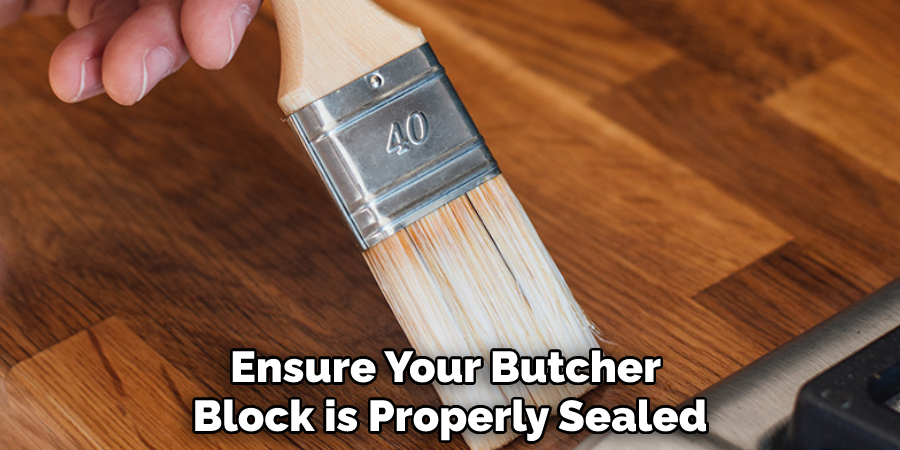
Taking these steps will ensure that your butcher block is properly sealed and can withstand regular use in a laundry room or other environment. In addition, it’s important to consider the type of sealant you’re using for your butcher block – some products are better suited for certain environments than others.
What is the Best Way to Clean a Sealed Butcher Block in Your Laundry Room?
Keeping your butcher block sealed for optimal longevity in your laundry room is important. Sealed butcher block can prevent staining and water damage, making it easier to clean the surface over. The first step is selecting the right cleaning product to use on the butcher block. It is important to avoid using abrasive cleaning products, such as scouring pads or steel wool, as these can scratch and damage the sealant on your butcher block.
The next step is to wipe down the butcher block with a cloth and warm water. This will help remove dirt and grime from the surface. Once the surface is clean, you can use a mild detergent to clean the butcher block further.
When using detergent, make sure to follow the instructions on the package and rinse thoroughly with warm water afterward. Finally, if needed, you can use a protective sealant or wax to help protect your butcher block from further damage in your laundry room. Applying a sealant or wax to the surface will help provide additional protection against spills, water damage, and staining.
Are There Any Special Maintenance Steps You Should Take With Your Sealed Butcher Block in the Laundry Room?
Yes, you should take a few essential maintenance steps to keep your sealed butcher block in the laundry room looking great. First, clean up any spills immediately with a damp cloth and mild soap or detergent. You can also use a specialized cleaner designed for butcher blocks if needed. Avoid using abrasive cleaners or scouring pads, as these can damage the sealant and leave your butcher block looking dull.
Next, ensure that water does not get underneath the sealed butcher block. If it does, you may need to reseal the butcher block or risk potential water damage down the road. Additionally, avoid placing any extremely hot pots or pans directly on top of the butcher block, as this can also cause damage.
Make sure to use trivets or pot holders when handling hot items in the laundry room. Regularly oiling your butcher block is also important for keeping it looking great and performing well. You should apply a natural oil such as mineral oil every few weeks, depending on how often you use it.
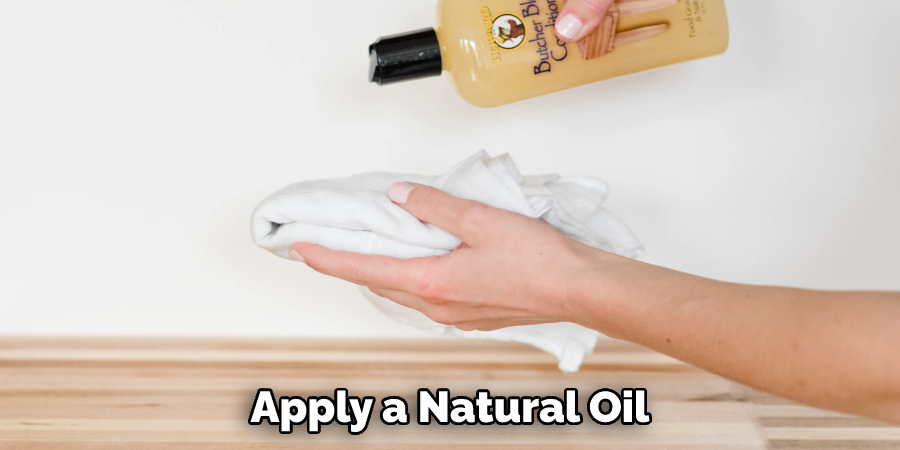
Conclusion
One of the main disadvantages of using butcher block in a laundry room is that it is not as durable as other materials. Butcher blocks can be easily scratched, dented, and stained if exposed to heavy loads or harsh detergents. Additionally, butcher block should be sealed regularly to protect against water damage.
In conclusion, there are many methods to seal butcher blocks for laundry rooms, depending on the desired level of protection and aesthetic look. Sealing your butcher block correctly can help keep it looking new longer while also protecting it from damage.
The most popular sealing methods include finishing oil, mineral oil, and polyurethane sealers. When applying a sealer, be sure to follow the manufacturer’s instructions carefully and use a clean, dry cloth. I hope this article has been beneficial for learning how to seal butcher block for laundry room. Make Sure the precautionary measures are followed chronologically.

